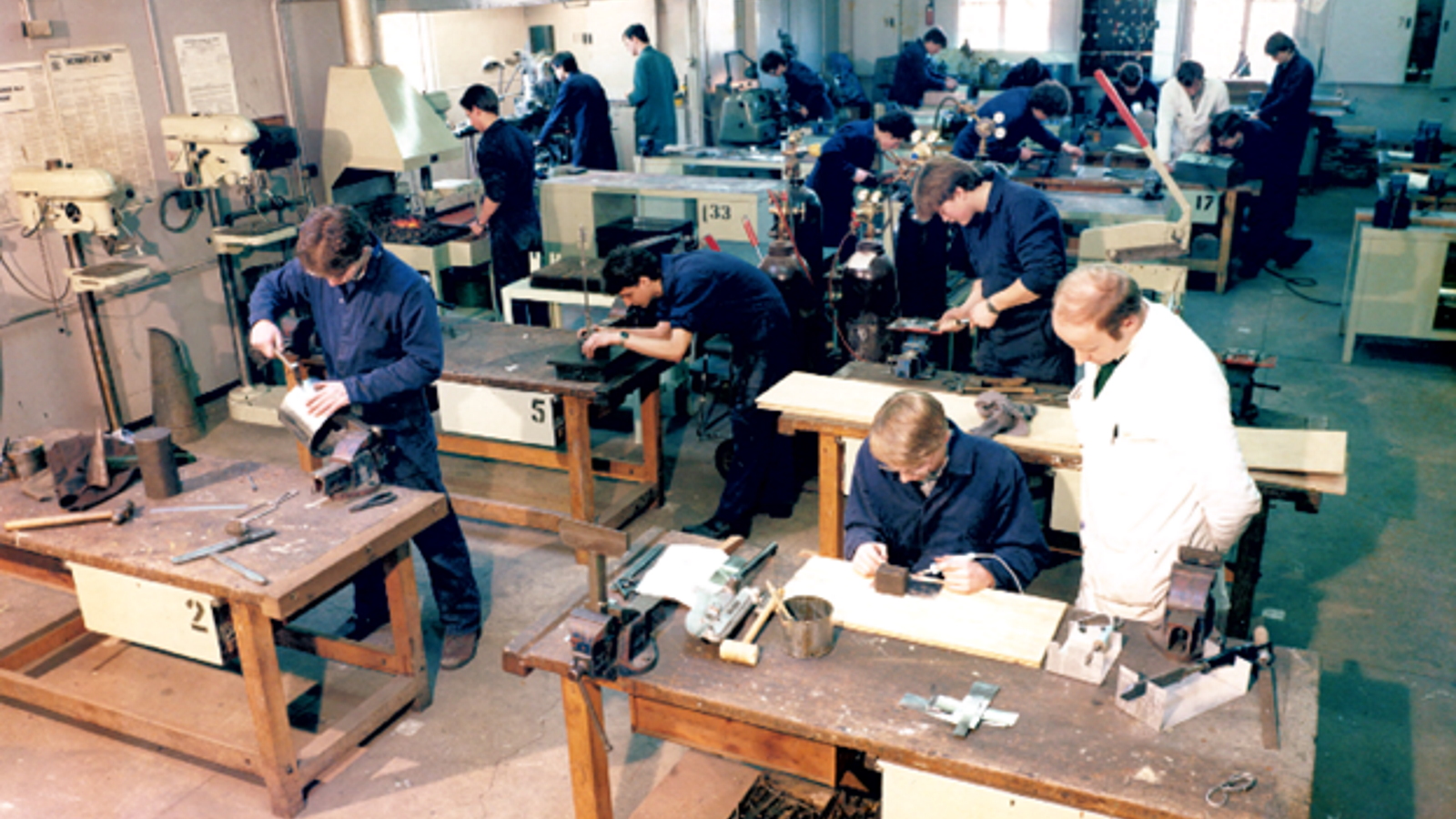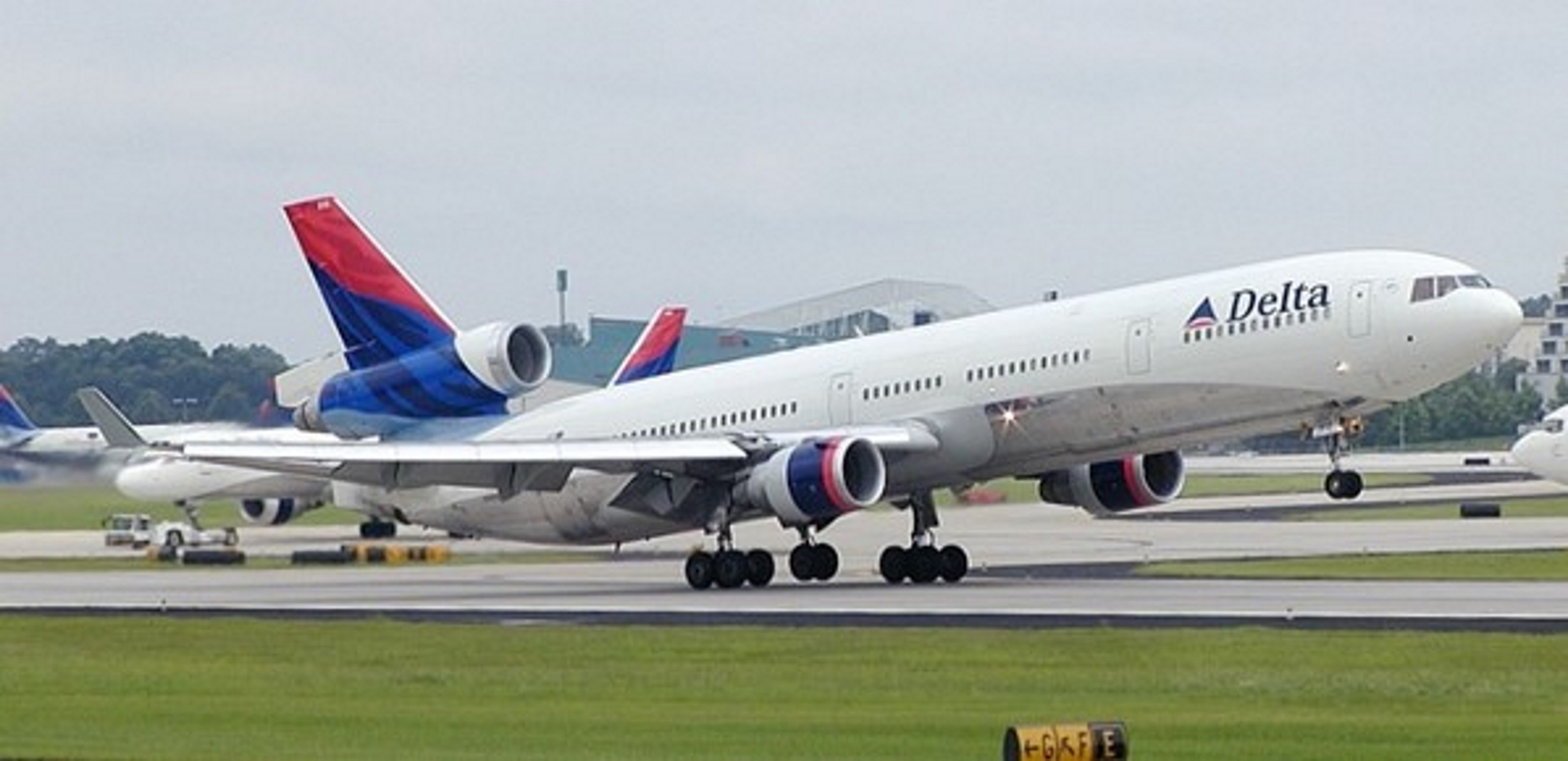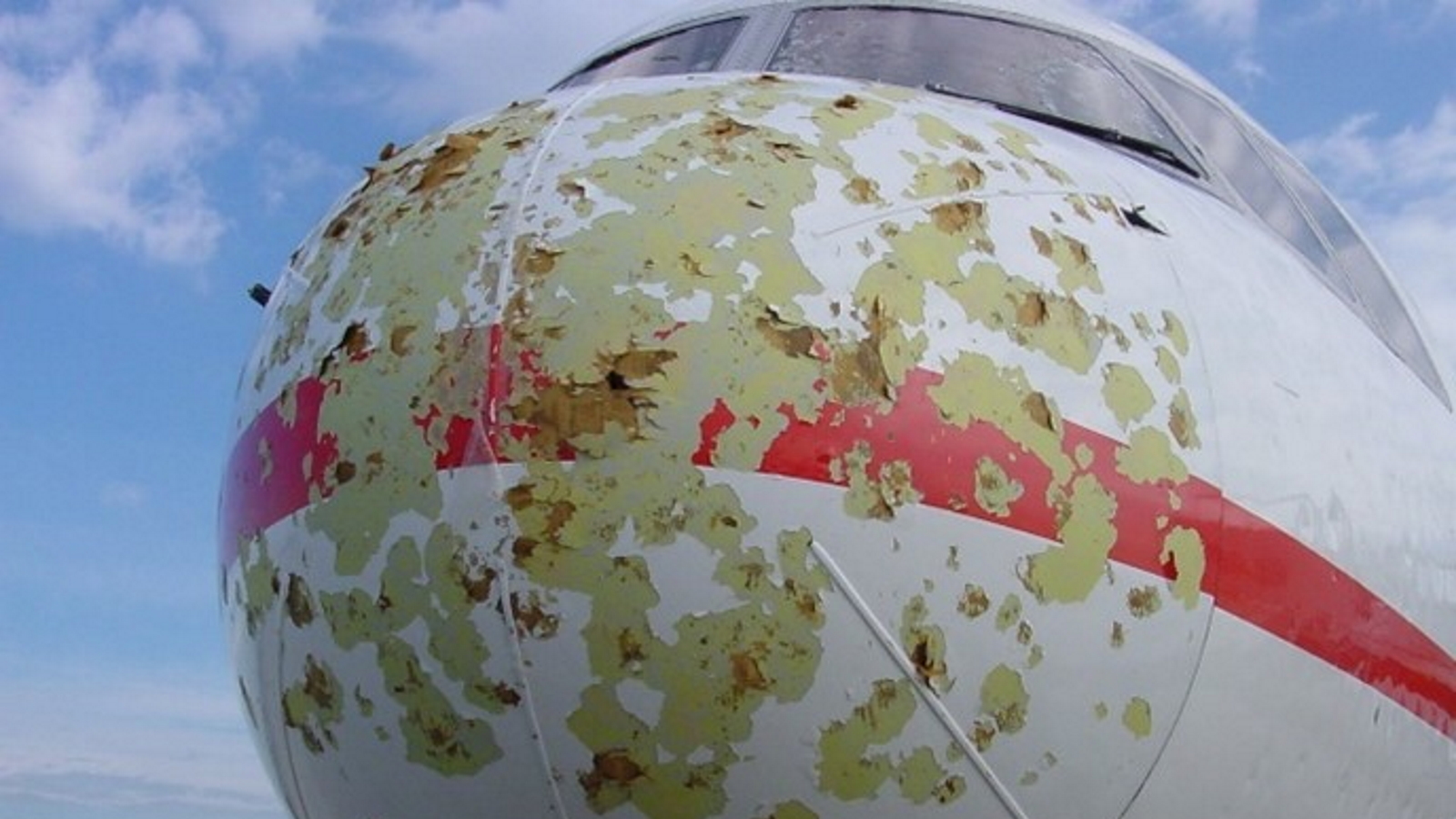
In many ways, Mark Palmer exemplifies the many opportunities awaiting Marshall's apprentices.
Having joined the company out of secondary school in 1984, Mark has worked across Marshall Aerospace’s business, taking on new responsibilities and rising through the ranks to his current role as an Engineering Fellow. Along the way, he has worked on some fascinating projects while also witnessing the evolution of Marshall itself.
We asked Mark to look back on his Marshall journey and share his thoughts on what makes this such an extraordinary company to be part of.
It was acceptable in the ‘80s…
Mark left secondary school in 1984 to pursue his love of aircraft and technical drawing. He enrolled in a technical apprenticeship delivered by Marshall and Bedford College.
As is still the case for incoming Marshall apprentices, Mark’s first port of call was the workshop training school – run at the time by two Marshall legends: Keirron Mascall and Robin Lipscombe (who was recently awarded an MBE for his service to education and training). The basic skills taught within the training school included sheet metal fabrication, machining, welding, and aircraft modification installation – all of which would prove essential in Mark’s later career.

Mark recalls that the exercises undertaken by the apprentices had to be absolutely precise to simulate that of how aircraft are designed and built. All of this made for quite a tough experience: many individuals could not stomach putting hours into a project, only to be told to start again because the end result wasn’t up to scratch. Faced with such demanding standards, Mark says, “some peers decided they couldn’t tolerate this discipline and found an alternate path in life.”
There were plenty of lighter moments, including the little pranks Robin and Keirron and would play on the apprentices: Mark describes how “at times we would be sent on errands to go to the stores to get a ‘sky hook,’ a ‘long weight’ or a ‘left handed screw driver’ – it was all part of the character building in the training centre.”
Mark also remembers that he and the other 16-year-old apprentices, lacking driving licenses, would be bussed to Bedford College every week for a long twelve hour day of lectures and practical sessions.
Despite the gruelling nature of the workshop training phase, Mark looks back fondly on that nine-month period: “the training centre was an excellent place to start, and Keirron and Robin were fantastic tutors,” he says.
The remainder of Mark’s apprenticeship was spent working in rotations across the Aerospace business. This entailed spending time in the hangars working on C-130 Hercules and L1011 Tristar aircraft, as well as in the aircraft planning, manufacturing, tooling, and inspection departments amongst others.
Eventually, Mark was finally able to fulfil his original ambition: spending the final two years of his apprenticeship in the Aircraft Drawing Office and ultimately qualifying as a Marshall Technician.
Life in the Aircraft Drawing Office
Mark’s memories of his two years in the Aircraft Drawing Office (as it was then known) are – literally – “dim” and “hazy.”
Back in the 1980s, it was of course still acceptable to smoke indoors in workplaces, and Mark recalls the Aircraft Drawing Office as a place full of “drawing boards lined with ‘old boys’ and their obligatory pipes.” This inevitably led to awkward questions when he would return home to be challenged by his mother for smelling of smoke!
Mark completed another rigorous training period under a strict Design Quality Manager, who insisted that apprentices write their lines on drawing templates between 3, 5 and 7 mm tram lines to get their hand printing up to the required level of quality, before being let loose on producing engineering drawings; later moving into the Computer Aided Design (CAD) Office.
CAD was in its infancy at the time, and Mark remembers the CAD Office as a highly sought-after area: “it was the team every young design engineer aspired to being part of; only the elite were allowed in this darkened air-conditioned room with the glare of the green CRT screens,” he says.
Making a career out of stress
Mark’s Marshall career took an unexpected turn in 1991, when he was offered the chance to attend a basic two week residential Aircraft Stress Analysis course at Cranfield University in Bedfordshire.
Mark took to stress analysis immediately, and on returning from his short course he decided to join the stress office team – initially for a planned six month period. Some 10 years later, he emerged from the stress office as Principal Stress Engineer, with a skillset that perfectly complimented his previous design skills.
Since then, Mark has continued to move from strength to strength: following his first management role as Group Leader running Structural Integrity and Repairs, he then progressed to the role of Head of Structural Design and Stress followed by Head of Mechanical Engineering and ultimately Engineering Fellow – his current position, being recognised as a Senior Structural Engineer in the business.
Since 1990, Mark has overseen the design of both small and large modifications to large transport aircraft, such as Lockheed C-130 Hercules, L1011 Tristar and Boeing E-3D along with structural repair design experience on many military and civil large aircraft types.
One modification project he is particularly proud of is the conversion of 15 Delta Airlines MD-11 aircraft, where Marshall designed the conversion of the interior from a 3 class configuration to a new 2 class configuration. This involved a complete reconfiguration of the cabin, including movement of galleys, toilets, seats, dividers, bins, and more. In overseeing structural analysis for this project, Mark spent four weeks in Atlanta with Delta Airlines—an experience he found particularly rewarding. “It was great to be in a different country with a team of colleagues supporting each other to deliver this project,” he says. “All those long hours of design back in Cambridge were rewarded when we got to see the final finished product through to launch.”

Mark is equally proud of his work leading repair design projects, which has mainly entailed giving structural advice to support military and civil in-service aircraft. The main challenge is usually the need to balance getting the aircraft back into service in an expedient way, while also being thorough in ensuring safety and airworthiness by meeting a host of stringent regulatory requirements.
Given the breadth of operating environments encountered by the aircraft Marshall supports, repair tasks vary considerably.
Mark has worked on tasks ranging from simple corrosion and crack repairs through to significant damage caused by bird strikes, pilot-induced tail strikes on take-off, hail damage and even small arms fire damage.


One particular incident, however, remains firmly lodged in Mark’s memory: “I always remember walking across the pan between two of our hangars to see the remains of an eagle partially hanging out of a large hole in the cockpit area of a C-130,” he recalls. “It’s surprising how much damage a bird can do to an aircraft!”
Building the next generation of talent
Reflecting his journey from apprentice to Engineering Fellow, Mark believes Marshall offers a unique set of opportunities and an open-minded approach to career growth.
“A lot has changed since I started here aged 16 – everything feels much more organised and standardised, and our training has adapted to meet some of the major changes coming to aviation,” he says.
“At the same time, the apprenticeships are still tough but unbelievably rewarding, and they still emphasise the need to learn core skills before working broadly across the business to gain a range of valuable experience.”
“Marshall is an incredible business where anything is there for the taking, providing you show you are willing and able to learn.”
To learn more about Marshall’s industry-leading apprenticeships, click here.